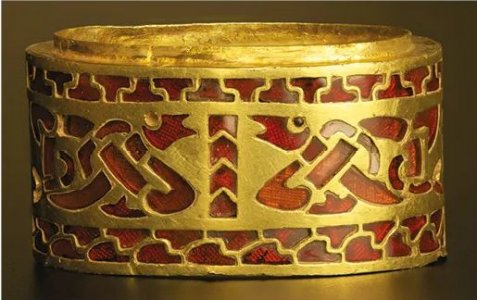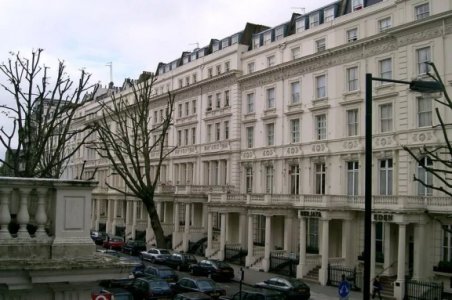Magna-Carta
Senior Member
- Location
- UK
The Staffordshire Hoard, England.
One of England's most extraordinary archaeological finds, was discovered in 2009 by Terry Herbert, a member of the Bloxwich Research and Metal Detecting Club. At the time, while exploring recently ploughed farmland near Hammerwich, Staffordshire, he unearthed a treasure trove of historical significance.
This incredible hoard comprises approximately 4,600 gold and silver items, including smaller metal fragments, all originating from 7th century Anglo-Saxon England. Among the remarkable features of the hoard are 28 pieces of metalwork adorned with garnets, believed at first to have been sourced from as far away as Sri Lanka or Afghanistan, but now thought to have come from Northern India and the area now known as the Czech Republic

Any treasure found in England, and perhaps the whole of the UK, is considered the property of The Crown, and therefore can’t be sold by the person who found it. Andrew Haigh, the coroner for South Staffordshire, declared the hoard to be "treasure", and therefore property of the Crown.
The purpose of this law is so that any treasure can be kept in the UK, looked after and preserved correctly, and then put on display for the general public.
So what about poor old Terry Herbert who found the treasure, I hear you ask? The treasure was officially sold to two museums, who rotate the treasure between them. Terry Herbert and the farmer of the field between them received £3.285 million. Not bad for a hard day’s work in a farmer’s field.
One of England's most extraordinary archaeological finds, was discovered in 2009 by Terry Herbert, a member of the Bloxwich Research and Metal Detecting Club. At the time, while exploring recently ploughed farmland near Hammerwich, Staffordshire, he unearthed a treasure trove of historical significance.
This incredible hoard comprises approximately 4,600 gold and silver items, including smaller metal fragments, all originating from 7th century Anglo-Saxon England. Among the remarkable features of the hoard are 28 pieces of metalwork adorned with garnets, believed at first to have been sourced from as far away as Sri Lanka or Afghanistan, but now thought to have come from Northern India and the area now known as the Czech Republic

Any treasure found in England, and perhaps the whole of the UK, is considered the property of The Crown, and therefore can’t be sold by the person who found it. Andrew Haigh, the coroner for South Staffordshire, declared the hoard to be "treasure", and therefore property of the Crown.
The purpose of this law is so that any treasure can be kept in the UK, looked after and preserved correctly, and then put on display for the general public.
So what about poor old Terry Herbert who found the treasure, I hear you ask? The treasure was officially sold to two museums, who rotate the treasure between them. Terry Herbert and the farmer of the field between them received £3.285 million. Not bad for a hard day’s work in a farmer’s field.
Last edited:




















